Guangzhou Port (Chinese:广州港)is a port in Guangzhou City, Guangdong Province, China. It is located in the north of the South China Sea, in the center of the Pearl River Delta, close to Macau and Hong Kong.
In ancient China’s Qin and Han Dynasties (206-202 BC), the ancient port of Guangzhou was a port for China’s foreign trade.
Since 1978, Guangzhou Port has developed into an important port of foreign trade in southern China.
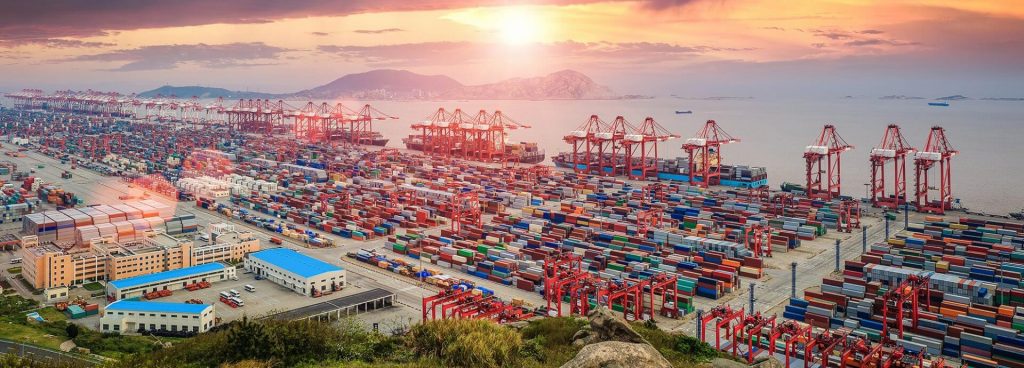
History
In ancient China’s Qin and Han Dynasties (206-202 BC), the ancient port of Guangzhou was a port for China’s foreign trade.
During the Tang and Song Dynasties (618-1279), “Guangzhou Tonghaiyi Road” was an ocean route.
The Qing Dynasty (1842) signed the “Nanjing Treaty” with the United Kingdom, and Guangzhou became China’s foreign trade port and foreign trade port.
Since 1978, Guangzhou Port has developed into an important port of foreign trade in southern China.
In 2014, the grain and general terminal of Nansha Port District of Guangzhou Port was opened to the public as a new terminal in Nansha Port District of Guangzhou Port.
In 2015, the feasibility study report of the Guangzhou Port Deepwater Channel Widening Project was approved.
In January 2016, Nansha opened international cruise routes such as Hong Kong, Vietnam, and Japan; in October, the rake suction dredger “Junyang 1” was held in Guangzhou Port for the completion of the transaction; in November, the “Yingding Dream” was opened in Nansha Home port route, opening international routes to the Philippines and Vietnam
.
On January 23, 2017, the “Victoria” opened a route in the Nansha Port District of Guangzhou Port.
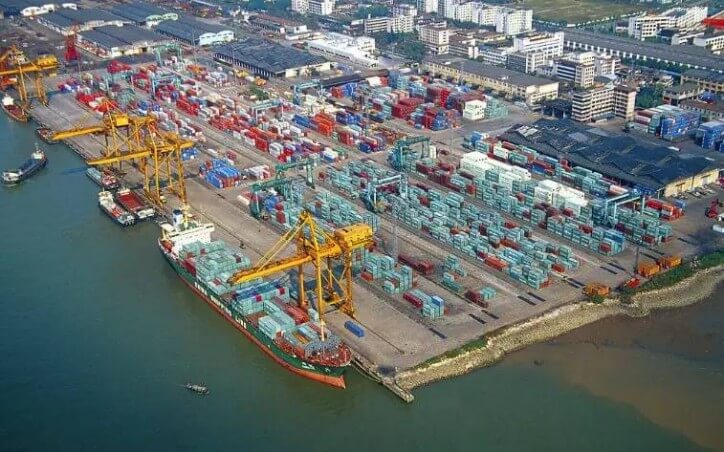
Port area composition
The Guangzhou Port is composed of a sea port and an inland river port.
The Guangzhou Harbour includes the four major port areas including the Inner Port Area, Huangpu Port Area, Xinsha Port Area, and Nansha Port Area, and the anchorages in the Pearl River Estuary.
Guangzhou Inland River Port is composed of three port areas: Panyu, Wuhe and Xintang.
In 2017, the cargo throughput of Guangzhou Port (including Guangzhou Sea Port and Inland River Port) was 590 million tons; the container throughput was 20.37 million TEUs.
As of August 2018, Guangzhou Port has reached more than 400 ports in more than 100 countries and regions in the world, and the port’s cargo throughput in 2018 ranked fifth in the world.
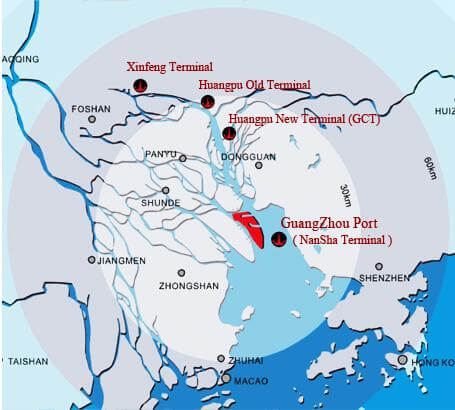
Nansha Port
Nansha Port District is the deep-water port of Guangzhou Port and an important port for foreign trade of Guangzhou Port.
The water depth of the Nansha port area is -17 meters, and the effective width is 243 meters. Meet the entry and exit of 150,000-ton ships.
There are 34 deep-water berths above 50,000 tons in Nansha port area, which can use the coastline for more than 20 kilometers and can dock large container ships of 8000-12000 TEU. Comprehensive deepwater port area for raw material transportation.
As of the end of March 2016, Nansha Port has opened 65 international routes.
In 2015, Nansha Port achieved a cargo throughput of 282 million tons, an increase of 11.7% year-on-year; container throughput was 11.77 million TEUs, an increase of 6.3% year-on-year, and a single port ranked the top 12 in the world.
Automated port
The fourth phase of Nansha Port is an automated port, applying intelligent unmanned driving technology.
Its main technical solutions are: single car automated shore bridge + unmanned IGV + horizontal loading and unloading of the yard side loading and unloading + full automation in the port area.
With a total investment of 6.974 billion US dollars (about 1 billion US dollars), it will integrate advanced technologies such as the Internet of Things, big data, and artificial intelligence to create intelligent, environmentally friendly, and save fully automated terminals.
Among them, the Unmanned Intelligent Guided Vehicle (IGV) uses Beidou satellite navigation and positioning system, lidar SLAM, visual SLAM and multi-sensor fusion positioning technology, which is more intelligent than AGV.
After the completion of the Nansha Phase IV project in 2021, the annual container explosion in the Nansha Port Area is expected to exceed 18 million TEUs.
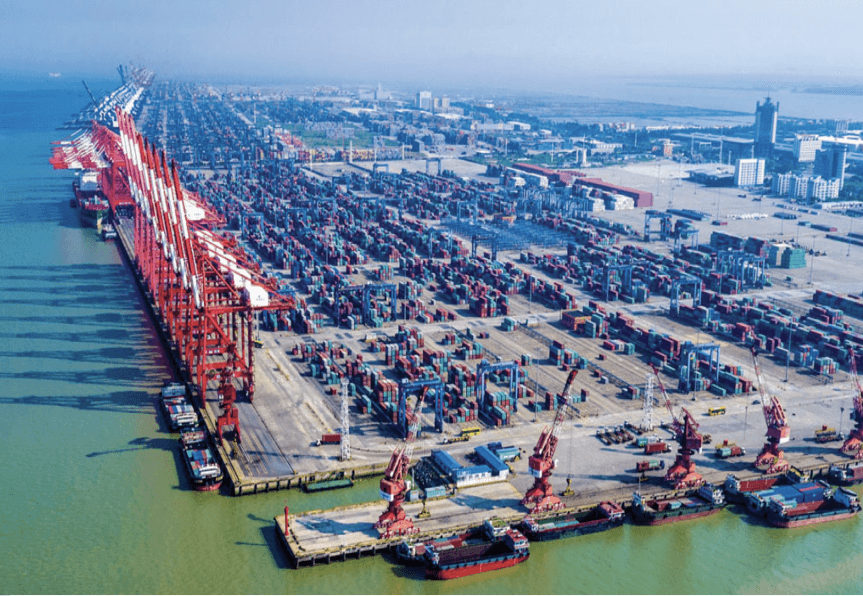
Hardware facilities
channel
The Guangzhou Port Outbound Channel is the main channel of Guangzhou Port, from the Huangpu Port Area to the natural water depth area on the south side of the Aizhou Island outside the Pearl River Mouth, along Zhuhai, Shenzhen, Zhongshan, Dongguan and other cities, with a total length of about 160 kilometers, including the Koumen Channel , Dahao waterway branch navigation area, Dahao waterway, Rongshutou waterway, Lingding waterway, Chuanbi waterway, Dahu waterway, Nizhou waterway, Lotus Shandong waterway, Lianhuashan west waterway, Xinsha waterway, Chisha waterway, Dahaozhou waterway, Huangpu Waterway.
The total mileage of other channels of Guangzhou Port is about 167 kilometers, including Xihe Channel, Donghe Channel, Nanhe Channel, Lijiao Waterway, Dongluowei Waterway, Xiaozhou Waterway, Guanzhou Waterway, Xinzhou Waterway, Luantou Waterway, Yuangangsha Waterway , Sanzhi perfume channel, Fenshuitou waterway, Haixingang waterway, newly built waterway, iron pile waterway, Fuliangang waterway, Xiaohuli waterway, Dahuxi waterway, Puzhou waterway, Longxue south waterway, Weizhou waterway, etc.
The rivers in Guangzhou’s jurisdiction are criss-crossed, the trunk and branches are connected, and the rivers and seas are directly connected. There are 287 waterways in the jurisdiction (except Guangzhou Port Area), and the total mileage of the waterway is 1154 kilometers. The main waterways are Baini Waterway, Shawan Waterway, Shiqiao Waterway and Jiaomen Waterway.
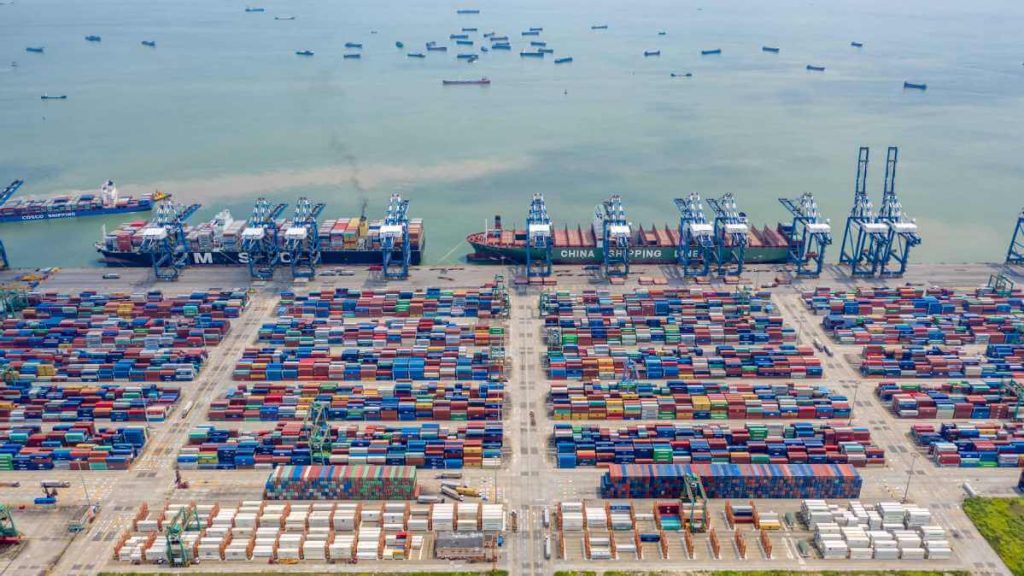
The navigation channel from the Pearl River Estuary to the Nansha Port Area has a navigable water depth of -17 meters and a navigable width of 243 meters. It can meet the requirements of 150,000-ton container ships without tidal one-way navigation, as well as 120,000-ton bulk carriers with tidal one-way navigation. 10,000-ton ships do not enter and exit the Nansha port area by two-way navigation; the navigable water depth from the Nansha port area to the Huangpu port area Xingang operation area is -13 meters, and the navigable width is 160 meters, which can meet the 50,000-ton ships navigable by tide.
The 50km outer section of the seaway of Guangzhou Port can meet the two-way navigation of 100,000-ton container ships and 150,000-ton container ships.
berth
As of the end of 2017, Guangzhou Port has 807 various berths for production, including 76 berths above 10,000 tons; 23 buoys, 88 anchorages, and a maximum anchoring capacity of 300,000 tons.
Handling machinery
As of the end of 2005, there were 1,161 various loading and unloading machines in Guangzhou Port District (the maximum lifting capacity was 250 tons).
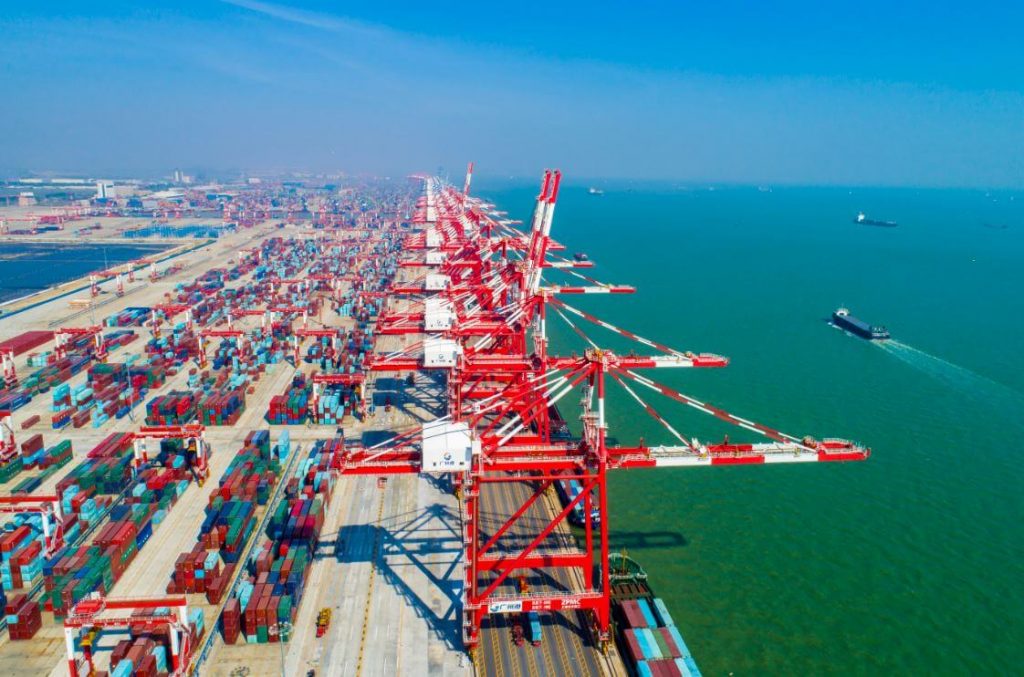
operation status
Main business
Guangzhou Port is mainly engaged in the loading and unloading of oil, coal, grain, fertilizer, steel, ore, containers and other cargo (including docks and anchorage transfers) and warehousing, bonded goods business, domestic and foreign cargo agency and shipping agency; agent transfer, agency passenger transportation; China Pilotage at home and abroad, waterway cargo and passenger transportation, logistics services.
Guangzhou Port’s part-time business includes: foreign trade and re-export trade; self-operated and agency import and export business of commodities and technologies other than the unified joint operation of the state organization and the state’s implementation of the company’s approved import and export commodities; ship refueling, ship Supply; port labor service, communication service; port machinery manufacturing, processing, repair; ship, car repair and other services.
Flight route
At the end of 2016, Guangzhou Port opened a total of 166 container routes, including 79 foreign trade routes and 87 domestic trade routes.
At the end of 2017, Guangzhou Port opened a total of 197 container liner routes, including 91 foreign trade routes and 106 domestic trade routes. Among them, Nansha Port District opened 117 container liner routes, including 85 foreign trade routes and 32 domestic trade routes. The route covers Europe, America, Africa, Australia, Asia and other major ports in the world. Maersk, CMA, Mediterranean and other leading liner companies all operate in Guangzhou Port.
At the end of 2017, there were Guangzhou-Hong Kong high-speed passenger ferry routes, Guangzhou Pearl River cruises and water public transportation routes, including 14 water public transportation routes.
In August 2018, Guangzhou Port has reached more than 400 ports in more than 100 countries and regions in the world.
Passenger and freight traffic
Freight
In 2016, Guangzhou Port completed a total cargo throughput of 544 million tons, ranking sixth in the world’s ports; of which, container throughput was 18.8577 million TEU, ranking seventh in the world.
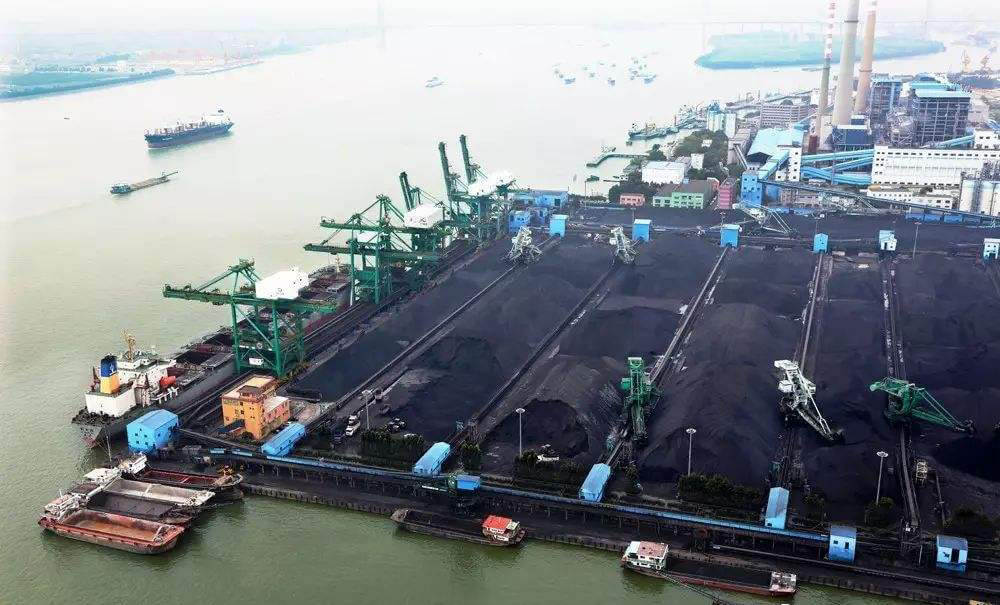
In 2017, Guangzhou’s waterway freight volume was 370 million tons, and cargo turnover was 20287 billion tons kilometers. The cargo throughput of Guangzhou Port (including Guangzhou Sea Port and Inland River Port) is 590 million tons, ranking fourth in the country and fifth in the world; container throughput is 20.37 million TEUs, ranking fourth in the country and seventh in the world.
In 2018, Guangzhou Port ranked fifth among the top ten ports in the world for port cargo throughput that year.
Passenger transport
In 2016, Guangzhou Port completed a passenger throughput of 873,400. A total of 104 cruise ships were berthed throughout the year, with a cumulative passenger throughput of 326,000, and the number of cruise passengers ranked third in the country.
In 2017, Guangzhou’s waterway passenger transport volume was 527,000 (excluding the Pearl River cruise and waterborne public transport passenger transport), and passenger turnover was 51.67 million kilometers. In 2017, the passenger traffic of the Pearl River was 3.298 million, and the passenger traffic of waterborne public transport was 15.95 million.
Guangzhou Port Data
- Country
- China
- Official name
- 广州港
- Location
- Pearl River Delta, Guangzhou, Guangdong
- Status
- In use
- Operator
- Guangzhou Port Group Co. Ltd
- Port type
- Deepwater seaport, Riverport
- Features
- Smart port, Natural port, Artificial port
- Region
- East Asia
- Sea area
- South China Sea
- Year of opening
- 206—202 BC
- Industrialization date
- 1842
- Annual container volume
- 21.8 million TEU (2018)
- Annual container volume
- 509 million tons (2017)
View Guangzhou Port on Google Satellite Map
Google satellite maps allow you to see building details more clearly, including natural landscapes such as mountains, rivers, deserts, sea and man-made engineering buildings.
If you are very interested in this engineering building, it is a good idea to click below Google Map icon. We will help you jump to the corresponding location of this building or engineering on Google satellite map.






























































